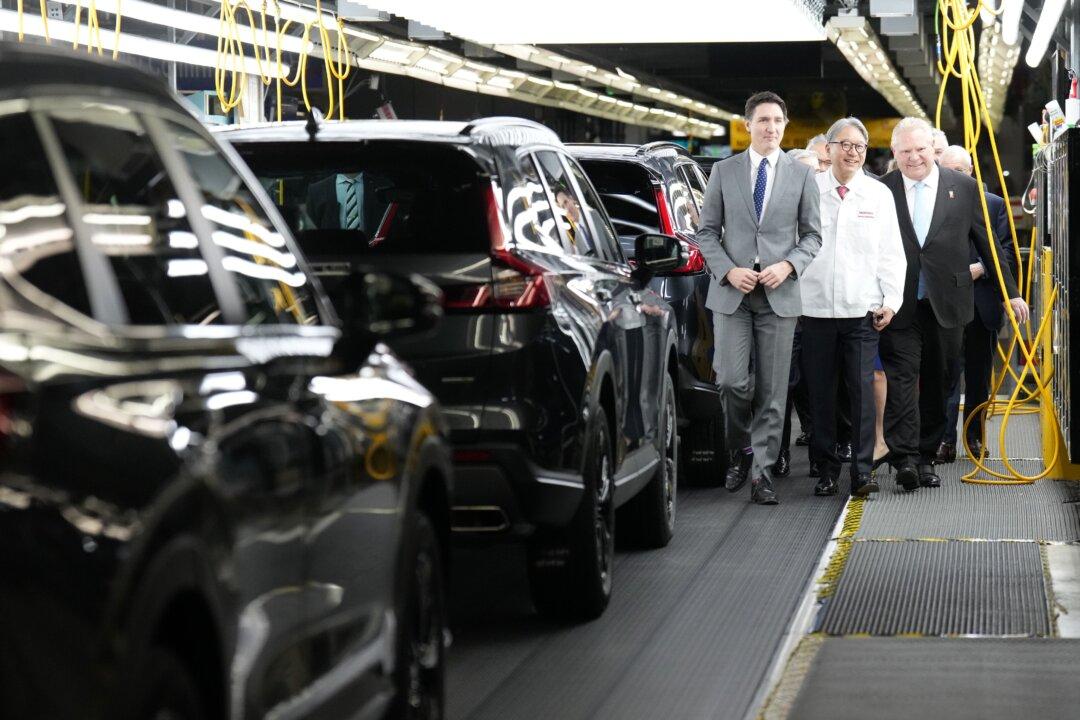SASKATOON—Most people use rare earth elements every day, although they may only have a vague idea of what these metals are.
“It’s extremely significant, given the world’s reliance on one supply chain where up to 90 percent of rare earths are either mined or processed in China,” Connelly told The Epoch Times.
“Whether it’s a wind turbine or an electric vehicle, or an LED lightbulb or a computer or a cellphone—name 100 items—they all use rare earths, and they either can’t operate or would operate much less efficiently without them.”
Mike Crabtree, president and CEO of the Saskatchewan Research Council (SRC), also sees the significant potential of rare earths.
“It’s phones, it’s cars, it’s satellites. It’s going to be as important to the 21st-century economy as oil and gas was to the 19th and 20th century,” he said in an interview.
SRC is building a $55 million rare earth processing facility in Saskatoon, virtually next door to the Vital Metals plant. The SRC plant will include processing, separation, and metals stages—the first of its kind in North America. Both are scheduled to be fully operational in 2024.

Rare earths have been produced for decades, but China has cornered much of the world’s market. And so various countries, including Canada, are striving to develop their own supplies. The need has ramped up in recent years because of the push to a greener economy.
“The difference has been the drive towards net zero, the drive towards the energy transition,” said Crabtree. “So it is the wind turbines, the electric vehicles, the larger scale use of these rare earths for this energy transition that has turbocharged the whole market for this.”
Connelly says the rising demand is a major challenge.
“The world is going to struggle to meet the demand that is generated or required,” he said. “Many developed and developing countries have set deadlines … for the adoption of electric vehicles and also de-carbonization of their energy grids. … It is very hard to see how that demand can be met.”
China’s Rare Earth Dominance
In June 2021, the Standing Committee on Natural Resources presented a report before the House of Commons noting that, considering that the demand for rare earth metals and China’s dominance in the field, it is important for Canada to develop the sector.One of the committee’s recommendations was that the federal government “renew its support for the Canadian mining sector so that it can take advantage of the many opportunities offered by developing critical minerals and recognize their unique contribution to advanced technologies and the energy transition.”
Vital Metals began production at its Nechalacho Project in the Northwest Territories in 2021. Operated by a subsidiary called Cheetah Resources, the company’s goal is to be the lowest-cost producer of rare earths outside of China.
Connolly said the company hopes to get production started from its nearby, larger Tardiff deposit within a couple of years.
“That deposit should be able to provide a significant percentage of the world’s rare earths that don’t come from China,” he said.
In light of China’s monopoly of the rare earths market, the U.S. government has been taking steps to establish a domestic supply chain for rare earths and other minerals vital for battery-making.

Making Saskatoon a North American Hub
Vital Metals has said the plan is to make Saskatoon a key link in the global rare earths supply chain, making the city a North American hub for the processing and researching of rare earth elements.Last month, a rare earth elements summit was held in Saskatoon that attracted a lot of interest.
“In the audience there were two companies that specialize in the separation of rare earths that were clearly evaluating Saskatchewan as a place for a rare earth separation facility,” said Connelly.
He believes Saskatchewan has a lot of advantages, including a strong workforce, good training facilities, and relatively low costs.
However, while the potential is there, no one is pretending it will be easy. Crabtree says China has a significant advantage, and a big head start on the rest of the world.
“The Chinese have invested long and hard in developing its position,” he said. “It is going to take time and investment to build a competitive position to that.”
But both Crabtree and Connolly believe one advantage is the environmental stewardship involved. The SRC plant, for example, will recycle all the water and chemicals it uses.
“The public are not going to tolerate driving around in EV’s where there has been substantial environmental damage, or where there has been an inappropriate use of labour,” Crabtree said.
And Connelly points to the environmental record and indigenous partnership at the Nechalacho project. About 70 percent of employees at the mine are indigenous, and the company has a close working relationship with the Yellowknives Dene First Nation. He notes that no water or chemicals are used in mining, and no toxic tailings are produced.
“There are relatively few rare earth deposits that are as benign and environmentally friendly to mine as the Nechalacho Project,” he said.
So while there is a long way to go, both men believe the developing industry has tremendous potential.
“Having established Canada’s and North America’s—and in fact the world’s—only rare earth chain that is absolutely independent of China or Russia and solely flows through friends and allies, is a very substantial achievement for Saskatchewan and the Northwest Territories,” Connolly said.





